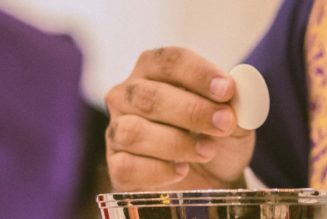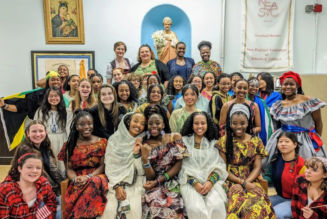We are consistently told that bodily presence is optional and expendable. This message is reinforced by technologies that make being ‘remote’ easy and attractive. And the fact is we have changed our lives accordingly—to the detriment, especially, of the relationships that matter most.
Human life demands embodiment. This is not an accident, nor is it optional. Sure, a kind of human life can be carried on in various degrees of disembodiment; this is evident all around us. But it is a diminution, a kind of shadow or shell of what could and should be.
Today we can see this truth in a way never before possible. Our technologies empower and indeed encourage unprecedented forms of disembodiment, and so we now have empirical evidence, if we have eyes to interpret it, of just how bodily-dependent we are. Especially in our relationships.
This stands to reason. Of course the gold-standard of human communication and presence is real bodily presence. We need look no further than a mother and baby. The profound need of baby, and mother (!), for bodily presence is no passing anomaly. The origins of human life indicate an unchanging feature. Other key examples of life at its height highlight the same point.
Consider spouses: could any of the things that most characterize their shared life be done remotely? The wedding itself. The wedding feast. The wedding night. The day to day living out of their marriage. The raising of their children. Their growing old together.
Consider the birth of a child, or the death of a parent—or indeed anyone to whom we are very close; consider all the human life events that are most significant.
This need imply no denigration of virtual presence at some of the above occasions when bodily presence simply cannot be done. The point rather is to consider, as I suggested at the outset, how our expectations and practices have shifted—away from bodily presence.
We might reflect briefly on the serious consequences for our friendships. Aristotle’s words echo across the centuries: “For there is nothing so characteristic of friends as living together.” This great principle forces us, especially today, to reexamine a central question of human life: what really constitutes ‘living together,’ especially when it comes to our deeper and most important friendships.
Here I think we should ask two questions.
First, to what extent have we let digital connection, due to its ease and convenience, reduce and replace the irreplaceable: bodily presence with our friends, and even family?
Second, to what extent is it reasonable and what extent unreasonable to utilize digital connection in lieu of bodily presence given the challenges of our current life situation?
Part of this complex problem is how digital practices have prompted us to try to do more things and maintain more relationships than is reasonably possible. We have come to think of bodily limitations as negative, rather than as intrinsic to the gift and plan of human life. Here the words of Felicia Wu Song in her book Restless Devices: Recovering Personhood, Presence, and Place in the Digital Age strike a chord:
“Together the design and norms of digital life ultimately immerse us in a story about the human condition that bends our assumptions to regard embodiment as a nuisance…”
With this skewed viewpoint we turn to digital or virtual practices as a kind of liberation and solution to a perceived problem. But this ‘solution’ aggravates the actual problem, namely, that we lack practice and good contexts for shared human life in its most important form—unmediated bodily presence, engaging in the ordinary activities of work, recreation, and leisure.
For obvious practical reasons, the answer to this cannot be simply to remove the aggravating factor. Our response must be nuanced and savvy. The more we understand the problem the better we can address it.
I suggest we begin with a new attitude toward embodiment. That we need to eat and exercise and work regularly with our bodies is a gift. (If we see our bodies as ‘slowing us down,’ who do we think ‘we’ are anyway?) That we need to be in the bodily presence of loved ones, and interact through a wonderful web of bodily ‘signing’ is a gift. This sign-making takes much time and practice and can never be replaced, or adequately reproduced or conveyed by any digital technology.
Regardless of just how we choose to regulate our digital practices, we can enact and cultivate a deepened appreciation for embodiment by choosing certain ordinary activities of work, recreation, or leisure, in our homes and with our friends. Our bodies, our souls, and our relationships might never be the same. ~ ~ ~
COMING MARCH 19. Our NEW PODCAST. The Intentional Household: A LifeCraft Podcast. Take a deep dive into radical renewal of your home, from crafting the personal relationships at its heart, to planting time, porch time and prayer time. Join John and Sofia Cuddeback, and friends, colleagues, and other guests. We’re ready to tackle the hard questions, together. Join us in this adventure. Here is a Clip (28 seconds!) from a forthcoming episode
Husband, father, and professor of Philosophy. LifeCraft springs from one conviction: there is an ancient wisdom about how to live the good life in our homes, with our families; and it is worth our time to hearken to it. Let’s rediscover it together. Learn more.








